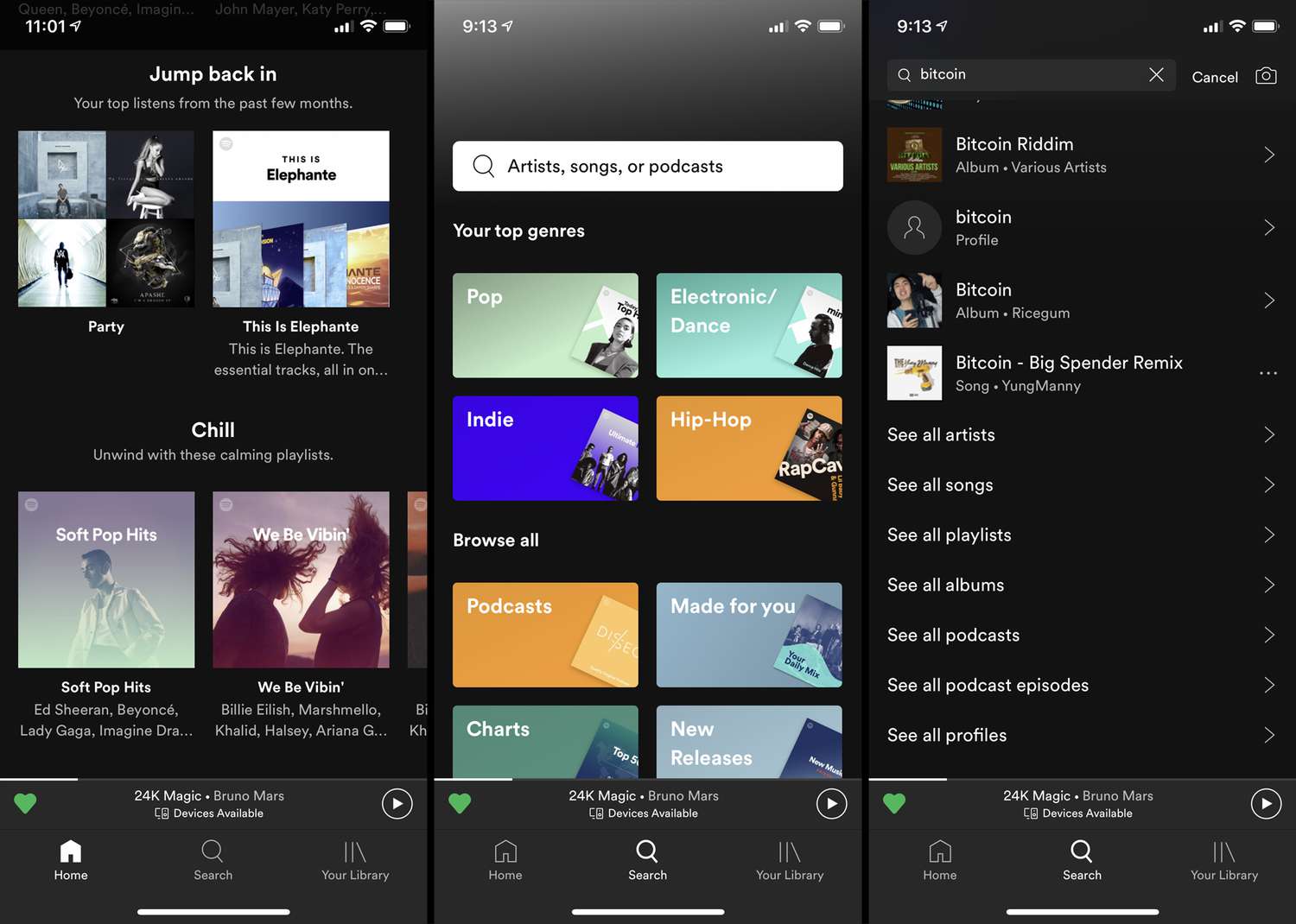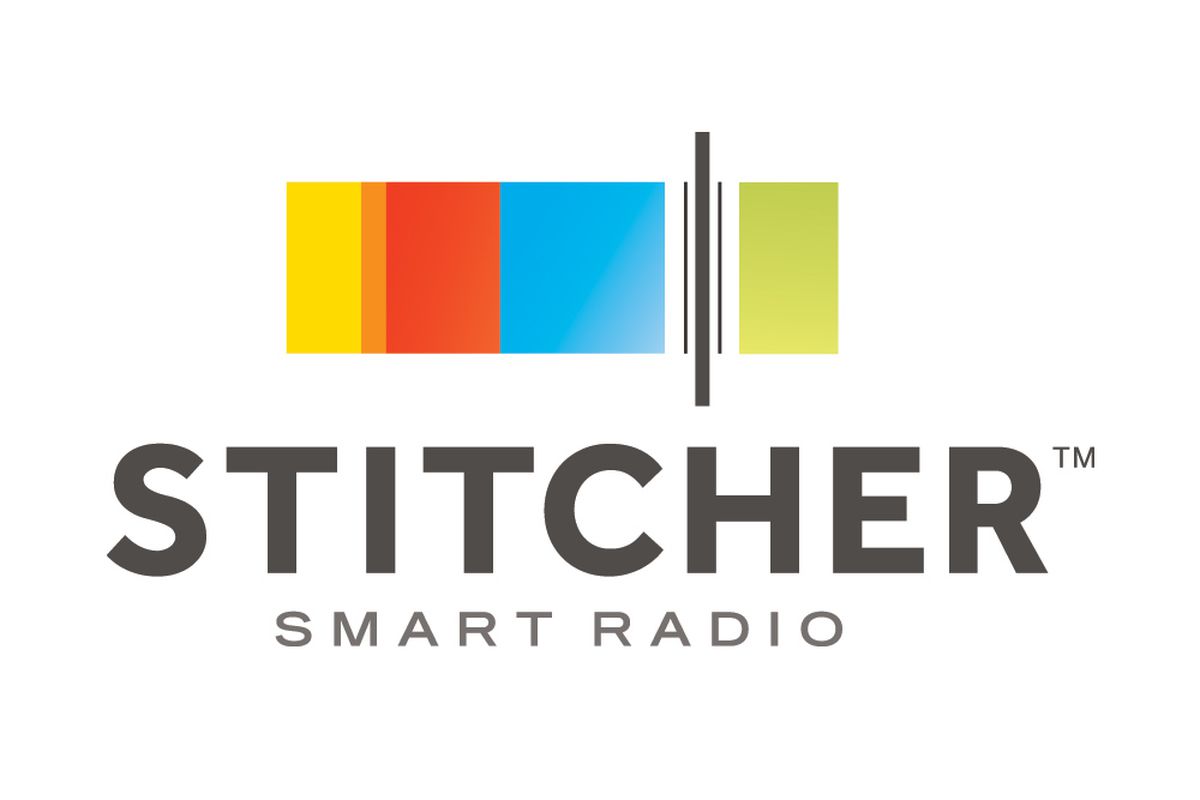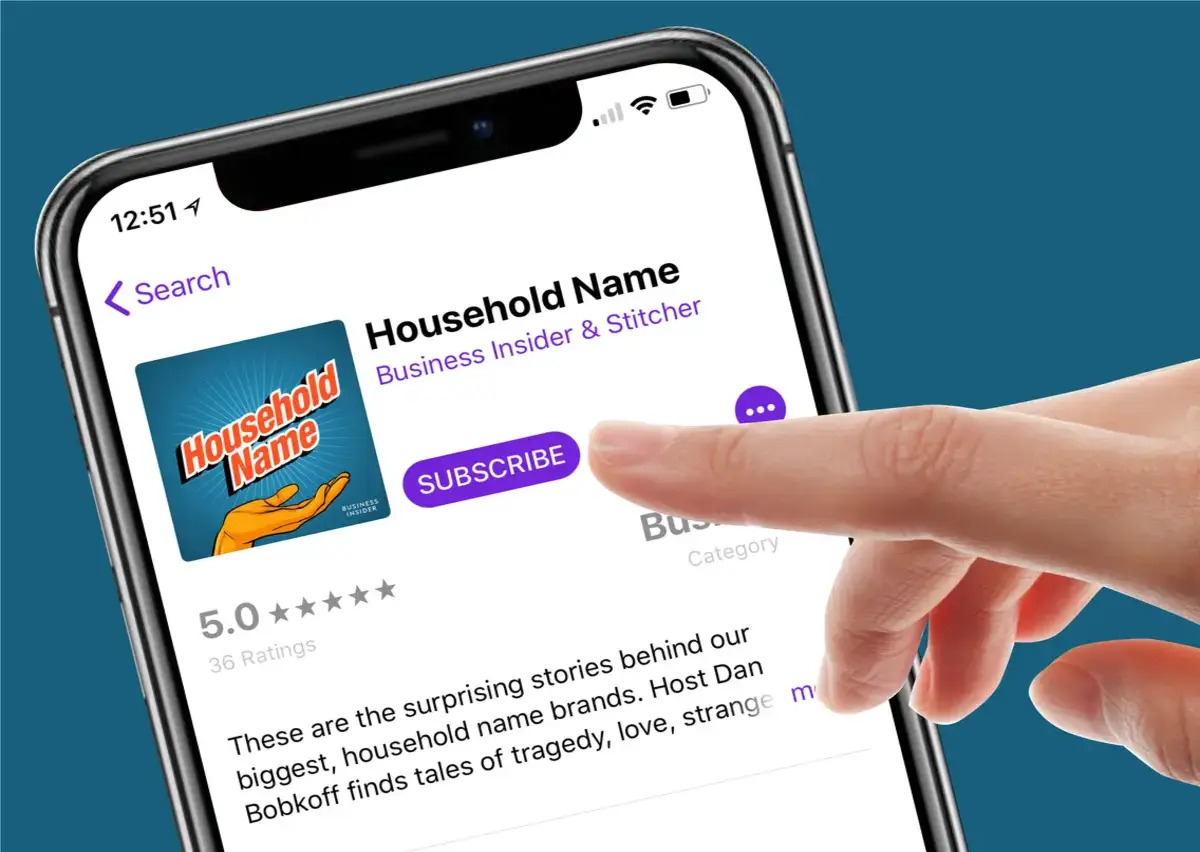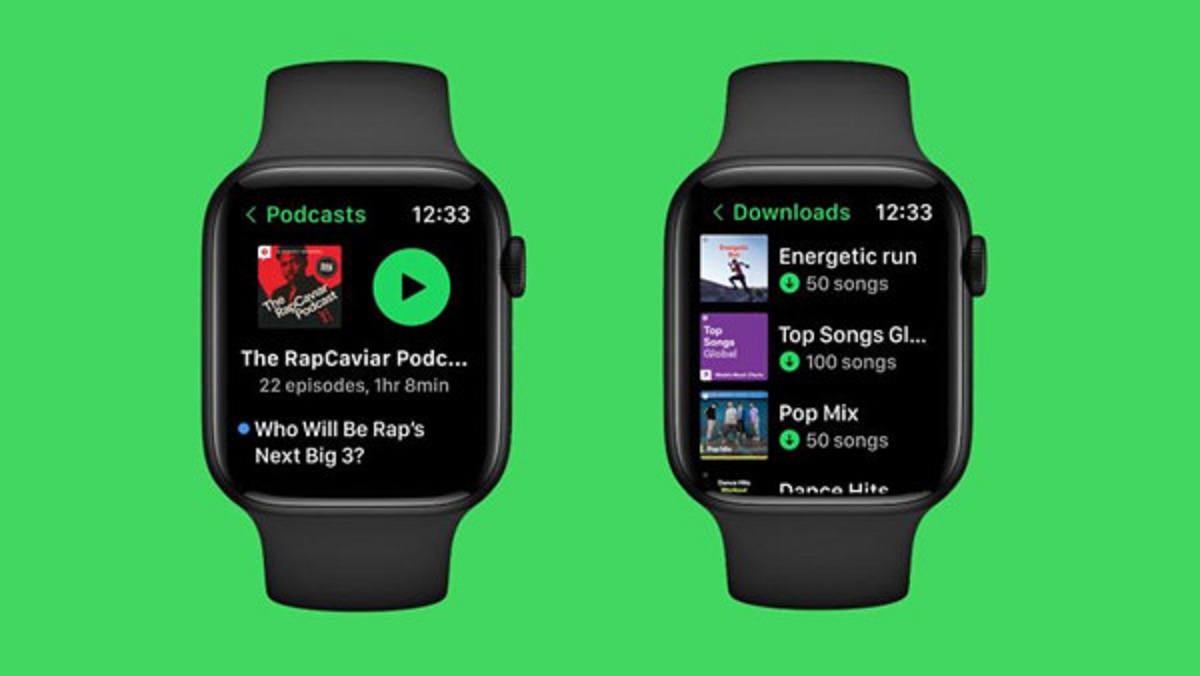Introduction
Welcome to the wonderful world of podcasting! Podcasting has become an increasingly popular medium for sharing information, expressing creativity, and connecting with audiences all around the world. Whether you want to start a podcast as a hobby, a platform for sharing your expertise, or as a way to promote your business, this guide will help you navigate the exciting journey of podcast creation.
As you embark on this podcasting adventure, it’s important to understand the key steps involved in bringing your podcast to life. From finding the perfect podcast idea to promoting your episodes, we will cover everything you need to know to get your podcast off the ground.
But first, why should you start a podcast? Podcasting offers a unique way to share your message in an intimate and engaging format. Unlike written content, podcasts allow you to connect with your audience on a personal level, as they can listen to your voice and hear the passion behind your words. It’s a medium that offers flexibility, allowing you to cater to the on-the-go lifestyle of today’s listeners.
Another enticing aspect of podcasting is the opportunity to reach a wide audience. With the ever-growing popularity of podcasts, there are millions of users actively seeking new and engaging content. By starting a podcast, you tap into this vast pool of potential listeners and establish yourself as an authority in your niche.
One of the keys to a successful podcast is finding the right podcast idea. Your podcast idea should be something that you’re passionate about, as this will drive your motivation and enthusiasm throughout the podcasting journey. It should also resonate with your target audience, offering them valuable information or entertainment that keeps them coming back for more.
Whether you want to create a podcast about personal development, true crime, entrepreneurship, or any other topic, the possibilities are endless. The key is to find a balance between your interests and what your target audience wants to hear.
In the following sections, we will delve deeper into each stage of the podcasting process, providing you with valuable tips, insights, and practical advice. By the end of this guide, you’ll have a clear understanding of how to create, publish, and promote your podcast.
So, are you ready to unleash your creativity, share your knowledge, and connect with a global audience? Let’s dive into the world of podcasting!
Finding a Podcast Idea
The first step in starting a podcast is finding the perfect podcast idea. Your podcast idea should be unique, interesting, and align with your passions or areas of expertise. Here are some tips to help you discover a compelling podcast idea:
- Identify your interests and expertise: Begin by making a list of topics you’re passionate about or knowledgeable in. This could be anything from cooking, technology, personal finance, or even niche interests like sustainable living or conspiracy theories. Choose a topic that excites you and that you can confidently speak about.
- Research market demand: Once you have a list of potential podcast ideas, research the market demand for those topics. Look for similar podcasts in your chosen niche and analyze their popularity and listenership. This will help you gauge if there is an existing audience for your idea and identify any gaps you can fill.
- Narrow down your focus: If you find that your initial idea is too broad, consider narrowing down your focus. For example, rather than creating a podcast about “cooking,” you could focus on a specific cuisine, cooking techniques, or quick and easy recipes for busy individuals. This will help you carve out a unique niche within your chosen topic.
- Consider your target audience: Think about who your target audience is and what they would be interested in. What kind of information or entertainment would resonate with them? Tailor your podcast idea to cater to their needs, preferences, and pain points.
- Brainstorm format and style: Podcasts come in various formats, including interviews, solo monologues, educational discussions, storytelling, and more. Experiment with different formats and determine what works best for your chosen topic and your own presentation style.
- Validate your idea: Before finalizing your podcast idea, seek feedback from trusted friends, colleagues, or potential listeners. Their insights can help you refine your concept and ensure that it has broad appeal.
Finding a podcast idea is an exciting and creative process. Take your time to explore different possibilities, and don’t be afraid to think outside the box. The key is to find a unique angle or perspective that sets your podcast apart from others in the same niche.
Remember, your passion and enthusiasm for the topic will be infectious to your listeners. So, choose a podcast idea that resonates with you and your target audience, and get ready to embark on an exciting podcasting journey!
Researching Your Podcast Niche
Once you have identified a potential podcast idea, it’s essential to conduct thorough research on your chosen niche. Researching your podcast niche will give you a deeper understanding of the market, help you identify your target audience, and inform your content creation strategy. Here are some steps to effectively research your podcast niche:
- Explore existing podcasts: Start by listening to and analyzing existing podcasts in your niche. Take note of the topics they cover, the format they use, and the engagement they receive from their audience. This will help you identify what works and what you can do differently to stand out.
- Analyze audience demographics: Gain insight into the demographics of the audience interested in your niche. Who are they? What are their interests, pain points, and preferences? Understanding your target audience will enable you to create content that resonates with them and meets their needs.
- Identify content gaps: Look for content gaps or underserved areas within your niche. Is there a specific aspect or topic that is not being adequately addressed? Identifying these gaps will allow you to create content that fills that void and attracts a dedicated audience.
- Stay updated with industry trends: Keep yourself informed about the latest trends and developments in your niche. This will help you create timely and relevant content that appeals to your target audience. Follow industry blogs, social media accounts, and relevant news sources to stay on top of emerging topics and discussions.
- Engage with your potential audience: Interact with potential listeners in online communities, forums, and social media groups related to your podcast niche. Ask questions, participate in discussions, and listen to their feedback. This will help you better understand their needs and tailor your content to address them.
- Conduct keyword research: Use keyword research tools to identify the most searched topics and phrases within your podcast niche. This will give you insights into what people are actively seeking information on and help you optimize your podcast titles, descriptions, and episodes for better discoverability.
Remember, thorough research is the foundation of a successful podcast. It helps you identify gaps, understand your audience, and create relevant and engaging content. By being well-informed about your podcast niche, you can position yourself as an authority and attract a loyal following.
Now that you have conducted extensive research on your podcast niche, it’s time to move on to the next step: planning your episodes!
Planning Your Episodes
Planning your episodes is a crucial step in creating a successful podcast. A well-planned episode structure ensures that your content is organized, engaging, and effectively delivers your message to your audience. Here are some steps to help you plan your podcast episodes:
- Create an episode outline: Start by outlining the main points you want to cover in each episode. This can be in the form of a bullet-point list or a detailed script, depending on your preferred style. Having a clear outline will keep you on track during recording and editing, ensuring a smooth and coherent flow.
- Determine episode length: Decide on the length of each episode based on your target audience’s preferences and attention span. Some podcasts are short and concise, while others are more long-form. Experiment with different episode lengths to find what works best for your content and audience engagement.
- Include segments and features: Consider incorporating segments or recurring features in your episodes. This can add variety and keep your audience engaged. For example, you could include a Q&A segment, interviews with guest experts, or a “tip of the week” feature.
- Balance structure and spontaneity: While having a structured outline is essential, leave room for spontaneity and organic conversation. Your podcast should feel natural and authentic, so allow yourself to deviate from the script when it adds value to the episode.
- Plan for audience interaction: Determine how you will engage with your audience during each episode. This could involve answering listener questions, featuring user-generated content, or conducting live polls and surveys. Encouraging audience participation helps foster a sense of community and keeps your listeners invested in your podcast.
- Consider a recurring theme or series: To provide continuity and keep your audience coming back for more, consider organizing your episodes around a recurring theme or creating episodic series. This allows you to delve deeper into specific topics and build anticipation for future episodes.
- Batch recording: Consider batching your episode recordings to streamline your production process. This involves recording multiple episodes in one sitting, saving you time and ensuring a consistent quality across episodes.
Remember, the key to successful episode planning is finding a balance between structure and flexibility. A well-planned episode outline provides a roadmap for your content, but also allows room for creativity and spontaneity to keep your podcast engaging and authentic.
Now that you have your episodes planned out, it’s time to move on to the technical aspect of podcasting: choosing the right equipment!
Choosing the Right Equipment
Choosing the right equipment is crucial to ensure a high-quality and professional-sounding podcast. While there are various equipment options available, here are the essential components you need to consider:
- Microphone: Invest in a good-quality microphone to capture clear and crisp audio. USB microphones are a popular choice for beginners due to their ease of use and affordability. If you have a larger budget and want even higher audio quality, consider getting an XLR microphone and an audio interface.
- Headphones: Use a pair of closed-back headphones to monitor your audio while recording and editing. This helps you identify any background noise, audio inconsistencies, or technical issues so that you can make necessary adjustments.
- Pop filter: A pop filter helps reduce plosive sounds that are created by bursts of air hitting the microphone. It acts as a screen between you and the microphone, reducing the harsh sounds and ensuring a more pleasant listening experience.
- Boom arm or microphone stand: Consider investing in a boom arm or microphone stand to hold your microphone in place during recording. This helps eliminate handling noise and allows for better positioning to achieve optimal audio quality.
- Acoustic treatment: To minimize echo and improve sound quality, consider adding some basic acoustic treatment to your recording space. This can include using foam panels, blankets, or other sound-absorbing materials to reduce reflections and create a more controlled environment.
- Recording software: Choose a reliable recording software or Digital Audio Workstation (DAW) to record and edit your podcast episodes. There are several options available, both free and paid, such as Audacity, GarageBand, Adobe Audition, or Reaper.
- Popularity: Consider the popularity and user reviews of the equipment you’re interested in. Read customer feedback and recommendations to ensure that you’re making a well-informed decision. It’s also helpful to seek advice from other podcasters or join podcasting communities to gather insights from experienced individuals.
- Budget: Evaluate your budget and determine how much you’re willing to invest in your podcasting equipment. While it’s important to prioritize quality, there are options available at various price points that can suit your needs.
Remember that the quality of your content is paramount, but having good equipment enhances the overall podcast experience for your audience. It’s worth investing in reliable equipment that will deliver professional-quality sound.
Now that you have chosen the right equipment, it’s time to move on to the next step: recording your podcast!
Recording Your Podcast
Now that you have your equipment set up, it’s time to dive into the exciting process of recording your podcast. Here are some essential steps and tips to ensure a successful recording session:
- Select a quiet and controlled environment: Find a quiet room or space with minimal background noise. Choose a location where you can control the ambient sounds and minimize interruptions.
- Test your equipment and settings: Before starting the recording, make sure to test your microphone, headphones, and recording software. Adjust the microphone placement and gain settings to achieve optimal audio quality.
- Warm up your voice: Perform some vocal warm-up exercises to prepare your voice for recording. This helps to enhance clarity and reduce vocal strain during the session.
- Follow your episode outline: Refer to your episode outline or script to guide your conversation. Stay organized, but also allow for a natural flow of dialogue and spontaneity.
- Speak clearly and with enthusiasm: Enunciate your words clearly and express enthusiasm in your voice. Capture the attention of your listeners by bringing energy and excitement to your delivery.
- Avoid excessive filler words and verbal crutches: Minimize the use of filler words such as “um,” “like,” and “you know.” Practice being mindful of your speech to maintain a smooth and professional delivery.
- Monitor audio quality: Keep an eye on your audio levels throughout the recording. Ensure that the audio is not too loud or distorted, but also not too soft or inaudible.
- Take breaks when needed: If your recording session is long, take short breaks to rest your voice and maintain focus. Stay hydrated and avoid straining your vocal cords.
- Record multiple takes if necessary: It’s common to make mistakes or stumble over words during recording. Don’t hesitate to redo a section or take multiple takes to ensure that you’re satisfied with the final result.
- Edit out any mistakes or unnecessary pauses: Once you’ve finished recording, listen to the audio and edit out any errors, unwanted background noise, or long pauses. Use editing software to enhance the overall listening experience.
Remember that practice makes perfect. It may take some time to feel comfortable and find your rhythm when recording, but with each session, you’ll become more confident and polished.
Now that you have successfully recorded your podcast episode, it’s time to move on to the next step: editing your podcast!
Editing Your Podcast
Editing is a crucial step in the podcasting process that helps enhance the overall quality and coherence of your episodes. Here are some steps and tips to help you effectively edit your podcast:
- Organize your audio files: Create a dedicated folder to keep your recorded episodes and audio files well-organized. This will make it easier to locate and access the files during the editing process.
- Trim the beginning and end: Start by trimming any unnecessary or silent sections at the beginning and end of your recording. This ensures a smooth and professional start to your podcast episode.
- Remove mistakes and stumbles: Edit out any mistakes, mispronunciations, or verbal stumbles in your audio. Smooth out the dialogue to create a seamless listening experience for your audience.
- Eliminate background noise: Use noise reduction filters or editing software to minimize background noise or unwanted audio artifacts. This helps maintain clarity and improves the overall audio quality.
- Adjust audio levels: Ensure that the volume levels of your podcast episode are balanced throughout. Normalize the audio to avoid any sudden volume changes that may distract or inconvenience your listeners.
- Add music and sound effects: Consider adding intro and outro music to your podcast episodes to create a professional and engaging opening and closing. Additionally, using sound effects sparingly can add a creative touch to your podcast, emphasizing certain moments or transitions.
- Enhance transitions: Smooth out transitions between different segments or topics within your episode. Use fading effects or crossfades to create a seamless flow between different parts of the conversation.
- Listen for pacing and timing: Pay attention to the overall pacing and timing of your episode. Remove any unnecessary pauses or long stretches of silence to maintain a good rhythm and keep your audience engaged.
- Add show notes and timestamps: Consider adding show notes or timestamps to your episode description or website. This allows listeners to quickly find and navigate to specific sections or topics discussed in each episode.
- Do a final quality check: Before finalizing your edited episode, listen to the entire file to ensure that everything sounds great. Pay attention to any remaining audio issues or areas that need further tweaking.
Editing can be a time-consuming process, but it is worth the effort to deliver a polished and professional podcast episode. As you gain experience, your editing skills will improve, and the process will become more efficient.
Now that your podcast episode is edited to perfection, it’s time to move on to the fun part: adding intro and outro music!
Adding Intro and Outro Music
The addition of intro and outro music to your podcast episodes can add a professional touch and help create a memorable listening experience for your audience. Here are some steps and tips to guide you in adding intro and outro music to your podcast:
- Select appropriate music: Choose music that aligns with the tone and theme of your podcast. Consider the mood you want to set and the emotions you want to evoke in your listeners. Look for royalty-free music or explore licensing options for commercial use.
- Keep it short and engaging: Decide on an intro and outro duration that is concise and captivating. Aim for a duration of around 10-15 seconds for your intro and 5-10 seconds for your outro. The purpose of these segments is to grab attention and provide a smooth transition.
- Edit the music: Use audio editing software to trim the chosen music to the desired duration. Ensure that the music flows seamlessly and fades in and out smoothly, without any sudden cuts or jarring transitions.
- Add voice-over: If desired, overlay a voice-over on top of the intro music to introduce and set the stage for your episode. This can include a brief description of the episode topic, a catchy tagline, or even a short personal greeting to engage your listeners right from the start.
- Blend with episode content: Aim to create a smooth transition between your intro and the main content of your episode. Consider using a musical segue or fade-in to seamlessly transition from the intro to your conversation.
- Reinforce your brand: Use consistent intro and outro music throughout your podcast episodes to reinforce your podcast brand identity. The music should be recognizable and associated with your podcast to create a sense of familiarity for your listeners.
- Test audio levels: Ensure that the volume levels of your intro and outro music are balanced with the rest of your episode. Pay attention to any abrupt volume changes that may disrupt the listening experience for your audience.
- Consider customized music: For a unique touch, you can consider commissioning a composer to create custom intro and/or outro music that truly reflects the style and personality of your podcast. This can help your podcast stand out and create a memorable brand image.
Remember, the goal of intro and outro music is to enhance the overall listening experience and create a recognizable brand identity for your podcast. Experiment with different music styles and formats to find what resonates with your audience and best represents your podcast’s theme.
With the intro and outro music added, your podcast is now ready for the next step: creating captivating podcast artwork!
Creating Podcast Artwork
Creating visually appealing and eye-catching podcast artwork is essential for attracting potential listeners and establishing your podcast brand. Here are some steps and tips to help you create compelling podcast artwork:
- Define your podcast brand: Before starting the artwork creation process, have a clear understanding of your podcast’s brand identity. Consider the tone, theme, and target audience of your podcast, as this will guide your design choices.
- Choose the right dimensions: Research the recommended dimensions for podcast cover art to ensure that it meets the requirements of different podcast platforms. The standard size for cover art is 3000 x 3000 pixels, but double-check the specifications to avoid any cropping or distortion issues.
- Use captivating images: Select high-quality images or illustrations that visually represent your podcast’s topic or theme. Ensure that the images are relevant, engaging, and attention-grabbing.
- Incorporate podcast title and branding: Include the title of your podcast in a clear and easily readable font. Experiment with different typography styles and colors that reflect your brand personality and align with the overall artwork composition.
- Consider your target audience: Think about the visual preferences and interests of your target audience. Tailor your artwork to resonate with them and attract their attention. Use colors and design elements that reflect the genre or topic of your podcast.
- Keep it simple and uncluttered: Avoid overcrowding your artwork with excessive text, graphics, or images. Focus on a clean and minimalist design that clearly conveys the essence of your podcast.
- Ensure readability: Make sure that the text in your artwork is easy to read, even when viewed as a thumbnail. Choose font sizes and styles that are legible and consider the contrast between the background and text colors.
- Create multiple versions: Develop variations of your podcast artwork for different platforms and purposes. Consider creating a square version for podcast directories and a banner version for social media platforms.
- Seek feedback: Share your podcast artwork with friends, colleagues, or members of your target audience to gather feedback. Consider their suggestions and make necessary adjustments to improve the visual impact of your artwork.
- Use professional design tools: If you have graphic design skills, use professional design software such as Adobe Photoshop or Illustrator to create your artwork. If you’re not confident in your design abilities, consider hiring a professional designer or using user-friendly design platforms.
Remember, your podcast artwork serves as a visual representation of your podcast and plays a significant role in attracting potential listeners. It should be visually appealing, relevant, and memorable to make a lasting impression.
With your podcast artwork finalized, it’s time to move forward with hosting and publishing your podcast!
Hosting and Publishing Your Podcast
Once you’ve created your podcast episodes and artwork, it’s time to find a reliable hosting platform and publish your podcast for the world to hear. Here are the steps to effectively host and publish your podcast:
- Choose a podcast hosting platform: Select a podcast hosting platform that suits your needs. Look for features such as storage space, bandwidth allocation, analytics, and ease of use. Popular hosting platforms include Libsyn, Buzzsprout, Podbean, and Anchor.
- Create an account: Sign up for an account on your chosen hosting platform. Provide the necessary information and follow the platform’s instructions for setting up your podcast.
- Upload your podcast episodes: In your hosting account, upload your podcast episodes as audio files. Ensure that your episodes are in the correct format (typically MP3) and labeled appropriately.
- Write episode descriptions: Craft enticing episode descriptions that capture the essence of each episode. Provide a brief summary and mention any noteworthy highlights or guests featured in the episode.
- Add podcast artwork and metadata: Upload your podcast artwork to your hosting platform. Fill in the necessary metadata, including your podcast title, author name, episode titles, and descriptions. This information helps podcast directories and platforms properly categorize and display your podcast.
- Generate an RSS feed: Your hosting platform will generate an RSS (Really Simple Syndication) feed for your podcast. This feed contains information about your podcast and its episodes. It’s essential as it allows podcast directories to pull your episodes for distribution.
- Submit to podcast directories: Submit your podcast’s RSS feed to popular podcast directories such as Apple Podcasts, Spotify, Google Podcasts, and Stitcher. Each directory has its submission process, so follow their guidelines to ensure your podcast gets listed.
- Embed on your website: If you have a website, embed the podcast player or provide links to your podcast episodes. This allows listeners to access your podcast directly from your website.
- Create a promotional strategy: Develop a promotional strategy to raise awareness about your podcast. Leverage social media platforms, email newsletters, and collaboration opportunities to reach your target audience and attract new listeners.
- Monitor analytics: Utilize the analytics provided by your hosting platform to track important metrics such as download numbers, listener locations, and engagement trends. This data helps you understand your audience and refine your podcasting strategy.
Remember, hosting and publishing your podcast is an exciting step that brings your hard work to fruition. Take the time to ensure that your podcast is properly listed on popular directories and engage in consistent promotion to grow your audience.
With your podcast hosted and published, it’s time to focus on submitting your podcast to directories!
Submitting to Podcast Directories
Submitting your podcast to various directories is a crucial step in expanding your podcast’s reach and gaining more listeners. Here are the steps to effectively submit your podcast to popular podcast directories:
- Apple Podcasts: Apple Podcasts (formerly iTunes) is one of the largest podcast directories. Visit the Apple Podcasts Connect website and create an Apple ID if you don’t have one. Follow the submission process, providing your podcast’s RSS feed and necessary information. Apple Podcasts typically takes a few days to review and approve submissions.
- Spotify: Spotify has become a prominent podcast directory attracting a vast number of listeners. To submit your podcast to Spotify, go to the Spotify for Podcasters platform and sign in with your Spotify account. Submit your podcast’s RSS feed and provide the required details. Spotify requires a short review and typically takes a few days to make your podcast available.
- Google Podcasts: Google Podcasts is another popular platform that expands the reach of your podcast. To submit your podcast, visit the Google Podcasts Manager website and sign in with your Google account. Submit your podcast’s RSS feed and fill in the necessary information. Google typically takes a few days to process and approve submissions.
- Stitcher: Stitcher is a widely recognized podcast platform. Visit the Stitcher Content Provider portal and sign up for an account. Submit your podcast’s RSS feed and fill in the required details. Stitcher manually reviews submissions, and once approved, your podcast will be added to their directory.
- Other podcast directories: Explore and submit your podcast to additional podcast directories such as Overcast, TuneIn, iHeartRadio, and Pocket Casts. Each directory may have its submission process, so visit their respective websites and follow their guidelines to get your podcast listed.
- Verify and optimize listings: Once your podcast is listed in various directories, verify that all the details are accurate and up to date. Update your podcast cover art, description, and any other relevant information. Optimize your podcast listing by including relevant keywords and compelling descriptions that attract potential listeners.
- Encourage reviews and ratings: Request your listeners to leave reviews and ratings on podcast directories. Positive reviews and ratings can attract new listeners and improve your podcast’s visibility within the directories.
- Stay engaged with your audience: Regularly interact with your audience through podcast directories. Respond to listener comments, address feedback, and encourage them to subscribe and share your podcast with others.
Remember, submitting your podcast to directories expands your reach and makes your podcast more discoverable to potential listeners. Be patient, as it may take several days or weeks for your podcast to be approved and listed in directories.
With your podcast successfully submitted to directories, it’s time to focus on promoting your podcast and engaging with your growing audience!
Promoting Your Podcast
Promoting your podcast is essential to increase visibility, attract new listeners, and build a loyal audience. Here are effective strategies to promote your podcast and expand your reach:
- Create a dedicated website: Build a website for your podcast where you can showcase episodes, provide show notes, and engage with your audience. Include social sharing buttons and subscription options to make it easy for listeners to share and follow your podcast.
- Utilize social media platforms: Leverage the power of social media to promote your podcast. Create profiles on platforms like Twitter, Facebook, Instagram, and LinkedIn. Share engaging content, snippets from episodes, behind-the-scenes insights, and interact with your audience.
- Engage with podcasting communities: Join podcasting communities and forums to connect with fellow podcasters and engage with potential listeners. Share your episodes, offer value through discussions, and collaborate with other podcasters to cross-promote each other’s shows.
- Guest on other podcasts: Reach out to other podcasters in your niche and offer to be a guest on their shows. This not only exposes you to a new audience but also helps build credibility and establishes you as an expert in your field.
- Create compelling teaser trailers: Produce short teaser trailers for upcoming episodes or new seasons of your podcast. Share these trailers on social media platforms, podcast directories, and your website to generate excitement and anticipation.
- Collaborate with influencers and experts: Identify influencers or experts within your podcast niche and collaborate on special episodes or interviews. Their participation will introduce your podcast to their followers and bring credibility to your show.
- Encourage listener participation: Interact with your audience and encourage them to engage with your podcast. Ask for listener feedback, suggestions, or questions that you can address in future episodes. Create a sense of community by responding to comments and incorporating listener input.
- Utilize email marketing: Create an email newsletter to keep your subscribers informed about new episodes, upcoming guests, and special offers or promotions. Provide valuable content and exclusive insights to keep your subscribers engaged.
- Repurpose content: Repurpose your podcast episodes into other formats, such as blog posts, videos, or social media content. This allows you to reach new audiences and drive traffic back to your podcast.
- Seek press coverage: Reach out to relevant media outlets, blogs, or local publications to pitch your podcast for potential coverage. Highlight unique aspects of your podcast and why it would be of interest to their readers or listeners.
- Offer incentives and giveaways: Run promotional campaigns where listeners who subscribe, leave reviews, or share your podcast are entered into contests for exclusive rewards or giveaways. This encourages audience engagement and helps spread the word about your show.
Remember, consistent promotion is key to growing your podcast audience. Combine different strategies, experiment with what works best for your podcast, and tailor your promotional efforts to capture the attention of your target audience.
With these promotional tactics in place, you’re well on your way to building a dedicated fanbase for your podcast. Now, let’s discuss the importance of engaging with your audience!
Engaging with Your Audience
Engaging with your audience is crucial for cultivating a loyal and dedicated fanbase for your podcast. By fostering meaningful connections and actively interacting with your listeners, you can build a sense of community and create a memorable podcasting experience. Here are some strategies to effectively engage with your audience:
- Respond to listener comments and feedback: Take the time to respond to comments, questions, and feedback from your listeners. Show appreciation for their support and acknowledge their contributions. This not only strengthens the bond with your audience but also demonstrates your commitment to their needs and interests.
- Create interactive episodes: Design episodes that involve audience participation. Encourage listeners to send in their thoughts, questions, or experiences related to the episode topic. Incorporate these contributions into your episodes to make your audience feel valued and involved in the discussion.
- Use social media to connect: Utilize social media platforms to connect and engage with your audience. Respond to messages, comments, and mentions. Share behind-the-scenes updates, sneak peeks, or extra content to keep your audience engaged and excited about your podcast.
- Host live Q&A sessions or AMA episodes: Organize live question-and-answer sessions either on social media platforms or as dedicated podcast episodes. This allows your audience to directly interact with you and have their questions answered in real-time. It also provides insights into their interests and concerns, helping you refine your content.
- Feature listener stories and testimonials: Share listener stories, feedback, and testimonials on your podcast. Highlight the impact your podcast has had on the lives of your audience. This not only shows appreciation but also serves as social proof and encourages others to engage with your podcast.
- Create a dedicated email newsletter: Regularly communicate with your audience through an email newsletter. Share exclusive content, updates, and additional insights. Encourage subscribers to respond and engage by asking for their input and feedback.
- Attend events and meetups: Consider attending podcasting events, conferences, or meetups where you can connect with your audience face-to-face. Engage in conversations, offer advice, and foster personal connections with your listeners. These interactions strengthen the bond between you and your audience.
- Collaborate with your listeners: Invite listeners to share their expertise or stories as guest contributors on your podcast. This not only gives them a platform to showcase their knowledge but also offers diverse perspectives and keeps your content fresh and engaging.
- Conduct audience surveys: Regularly conduct surveys or polls to gather feedback and input from your audience. Ask for their opinions on potential episode topics, guests, or improvements to your podcast. This helps you understand their preferences and tailor your content accordingly.
- Initiate conversations on podcasting platforms: Engage with your audience on podcasting platforms or forums dedicated to podcast discussions. Participate in relevant discussions, answer questions, and share your expertise. This allows you to connect with podcast enthusiasts and potential listeners.
Remember, building a strong relationship with your audience is an ongoing process. Actively engaging with your listeners not only strengthens their loyalty but also provides valuable insights for the growth and improvement of your podcast.
With these strategies in place, you can foster a vibrant community around your podcast and cultivate meaningful connections with your audience. Now, let’s explore the potential ways to monetize your podcast!
Monetizing Your Podcast
Monetizing your podcast is a great way to turn your passion into a profitable venture and generate income from your content creation efforts. Here are some effective strategies to monetize your podcast:
- Sponsorship and advertisements: Seek out potential sponsors or advertisers who align with your podcast’s niche or target audience. Collaborate with brands that resonate with your listeners to create sponsored content or include ads within your episodes.
- Affiliate marketing: Join affiliate programs and promote products or services related to your podcast’s theme. Recommending products or using affiliate links in your show notes can earn you commissions for every sale made through your referrals.
- Offer premium content: Create exclusive premium content or bonus episodes for your dedicated listeners. By offering additional value, you can charge a membership fee or offer these extras as part of a paid subscription model.
- Merchandise and merchandise: Launch a line of podcast merchandise such as t-shirts, mugs, or posters featuring your podcast’s logo or catchphrase. Sell these items on your website or through third-party platforms to generate additional revenue.
- Crowdfunding and donations: Set up a crowdfunding campaign or create a Patreon account to allow your listeners to contribute financially to your podcast. Offer exclusive perks or rewards to your supporters as a token of appreciation.
- Live events and workshops: Organize live events, workshops, or webinars related to your podcast’s niche. Charge admission fees or offer premium tickets with added benefits. These events not only generate revenue but also provide unique experiences for your audience.
- Sell your expertise or services: Leverage your podcast’s authority and expertise to offer consulting services, coaching sessions, or online courses. Package your knowledge into value-added services that cater to your audience’s needs and interests.
- Sponsored episodes or guest appearances: Collaborate with other podcasters for sponsored episodes or guest appearances on their shows. This not only expands your audience but also opens up opportunities for cross-promotion and potential revenue sharing.
- Brand partnerships and endorsements: Establish strategic partnerships with brands that align with your podcast’s values and target audience. Collaborate with them for sponsored episodes, exclusive discounts, or product endorsements.
- Repurpose your content: Reformat your podcast episodes into e-books, blog posts, or digital courses. Sell these repurposed content pieces on platforms like Amazon Kindle or your website to widen your revenue streams.
Remember, monetizing your podcast requires finding the right balance between generating revenue and maintaining the authenticity and value of your content. Be transparent with your audience about your monetization strategies and ensure that any sponsored or paid content aligns with your podcast’s mission and interests.
With these monetization strategies in mind, you can explore various avenues to earn income from your podcast and turn your passion into a sustainable business.
Conclusion
Congratulations on completing this comprehensive guide to starting, creating, and monetizing your podcast! You’ve learned valuable strategies to find a podcast idea, conduct research on your niche, plan engaging episodes, choose the right equipment, and record and edit your podcast with professional quality.
Moreover, you’ve discovered effective ways to promote your podcast, engage with your audience, and monetize your passion. From submitting your podcast to directories, leveraging social media, and building a loyal fanbase to exploring sponsorship opportunities, merchandise sales, and premium content, you have a wide range of options to generate income while delivering exceptional content.
Remember, creating and growing a successful podcast requires consistent effort, dedication, and a deep understanding of your target audience. Continuously engage with your listeners, adapt to their feedback, and stay up to date with industry trends to ensure that your podcast evolves and remains relevant.
Embrace the ever-evolving world of podcasting, experiment with different strategies, and stay true to your unique voice and style. Keep refining your skills, exploring new techniques, and seeking ways to provide value to your audience.
As you embark on your podcasting journey, remember to enjoy the process itself. Celebrate your successes, learn from challenges, and embrace the incredible opportunities that podcasting brings.
Now, armed with this knowledge and guidance, it’s time to turn your podcasting dreams into reality. Start planning, recording, and sharing your unique voice with the world. Your audience is waiting; go captivate them with your passion, knowledge, and creativity!

























